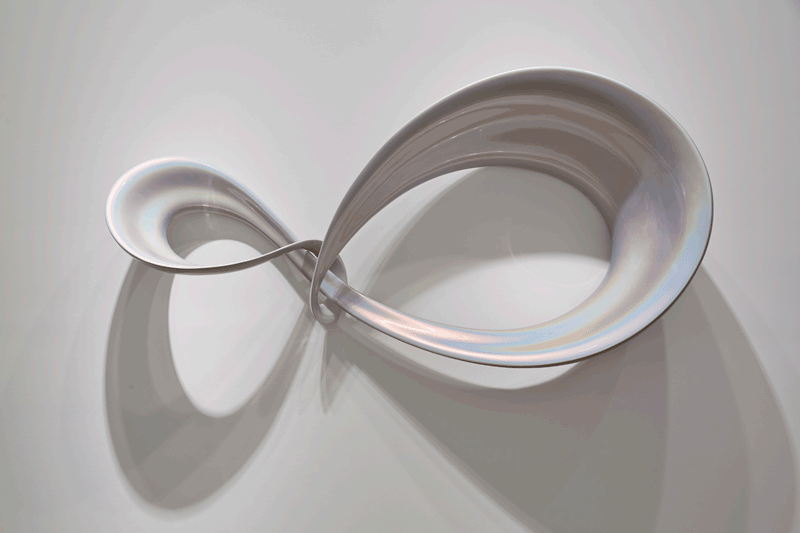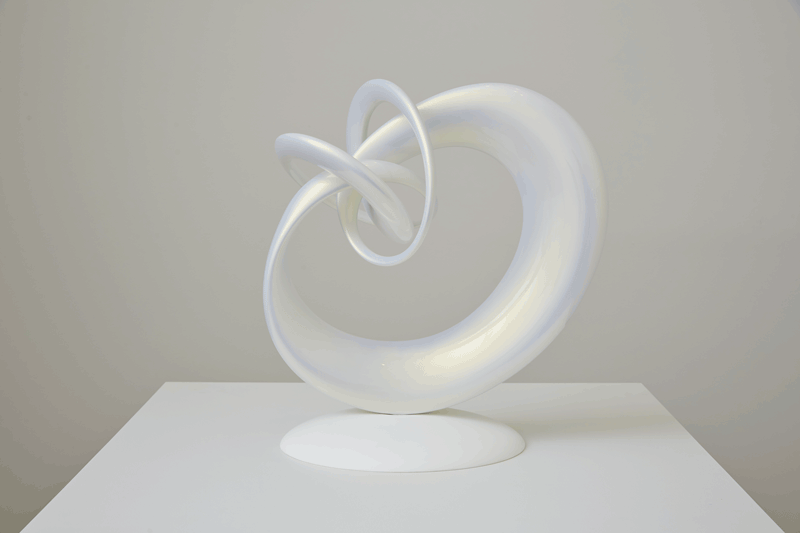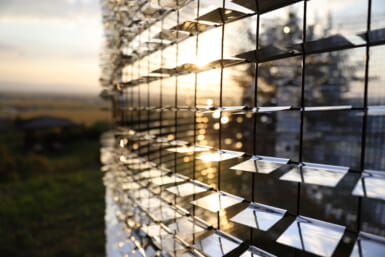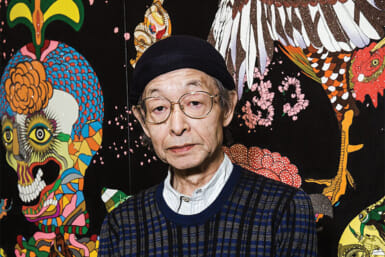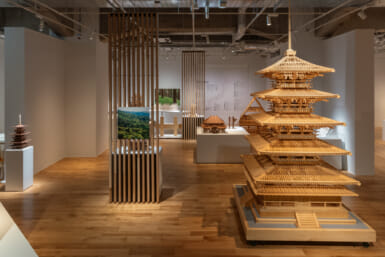Returning to SCAI The Bathhouse for her first solo exhibition in more than 10 years, Mariko Mori is presenting a series of work that is both very new – and very old – at the same time.
Mariko Mori rocketed to international fame in contemporary art during the mid 1990s with her alien “live art” pieces in New York, Tokyo, and London. Her photography captured the artist dressed in futuristic, out-of-this world costumes that she had designed, doing domestic chores or everyday errands in the city, challenging ideas of what it meant to be a “normal” person.
Mori’s most recent works are stripped down to the bare necessities, focusing no longer on aliens or elaborate sets, but on what makes us human, as she explained during a visit to SCAI the Bathhouse, where she is holding her first solo show in more than a decade. “There are 7 million years of history in human evolution, and I am looking for evidence of when we first became spiritual; when humans developed a [modern] sense of feelings and minds.” She cites the 2015 discovery of 15 complete sets of 3-million-year-old hominid skeletons in South Africa, explaining that “they were found deep in a cave, meaning there had been great care about their burial and in trying to protect them.” Mori considers this one of the earliest “[finds] of something that is fundamentally human.”
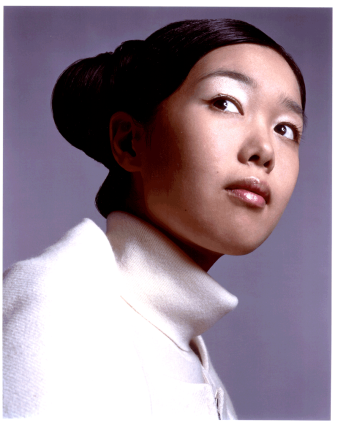
“My pieces are simply reintroducing ideas we humans already possess inside us, and I’m sharing them again with new generations.”
Although her latest research delves into the ancient origins of humankind, Mori’s most recent exhibition, “Cycloid,” features cutting-edge creation techniques based on complex geometric forms, and takes inspiration from theories that describe the creation of the universe. To bring these abstract shapes to life, Mori used a series of equations that generated the three-dimensional shapes, initially using values produced by a computer program, and leaving some elements up to chance. Prototype versions of the pieces are created using a 3D modeling program, and Mori will go through dozens of iterations before she arrives at “golden egg.” As she explains, there is no right or wrong design, but relentless work at a design until it “feels right,” and expresses a sense of flow that is a constant hallmark of her recent work. These final shapes are cast in aluminum that is then coated with a pearlescent sheen; simply put, they are pieces that must be seen in person.
Mori would be the first to admit that the sources that fire her imagination are hardly run-of-the-mill: “In finding ideas and inspiration, my antenna is a little bit different.” She also credits a nurturing environment and the input of people around in her creative development over the years: “[While] it’s important to believe in yourself … nobody can do it alone.” Although she has recently moved to London, she says that the attitude that surrounded her in New York was crucial to her confidence as an artist: “In America, nobody says ‘you can’t do that,’ they say, ‘you can do it!’” Mori believes those in the West are pushing horizons in art, and she thinks that there is fertile ground for the same kind of development in Tokyo, where, as she puts it, “there is a rich culture of tradition. [Thanks to] the presence of that foundation, there is so much potential.”
Finally, despite the complexity of the concepts that inform her work – which range from the dance of subatomic particles to the ebb and flow of the cosmos itself – Mori is quick to remind us that her creations are bringing concepts that even our millions-year-old ancestors would resonate with: life and death, a dense net of cycles that shape our world, and the creative power of daily life: “My pieces are simply reintroducing ideas we humans already possess inside us, and I’m sharing them again with new generations.”
Mariko Mori’s “Cycloid” will be on display at SCAI the Bathhouse until April 23. The gallery is open Tuesday through Saturday, 12:00 to 18:00. www.scaithebathhouse.com
Main Image: Ekpyrotic String II, 2014, Fiberglass, corian, paint and lacquer, 101 x 200 x 46.2 cm
Updated On July 18, 2017

